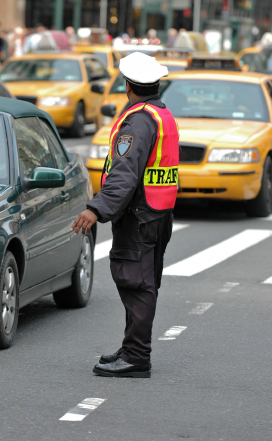Rebuilding on the Fly: NFV meets OSS/BSS
By: Tim Young

The city I call home—a mid-sized city in the southeastern US—is bisected by a stretch of freeway that dates back to the Eisenhower presidency.
For decades, it was a stretch of I-40, the third-longest interstate highway in the country, which stretches more than 2,500 miles from Barstow, California to Wilmington, NC. A bypass opened a quarter-century ago and claimed most of the I-40 through-traffic from this particular stretch of roadway, but it remains heavily traveled, skirting the downtown core and connecting the city’s most populous neighborhoods and shopping districts.
And it’s a mess.
The exit ramps are far too short and the roadbed is potholed and worn. The overpasses are crumbling, with at least one closed to vehicle traffic and in need of a complete rebuild. Acceleration lanes, where they exist, are narrow and awkward. Like many mid-century highways, it was built without much regard for pedestrian connectivity and inelegantly cordons off neighborhoods from one another. It contains bottlenecks and snags, and it simply isn’t an optimal conveyance for modern commuters. It’s one of the many examples of critical infrastructure projects around the country that are long overdue.
And so, sometime in the next few years, the several-mile-long chunk of highway is getting completely shut down and rebuilt. No chipping away at the problem, closing an overpass at a time or routing cars into a single lane of traffic for a half-decade. A couple miles of roadway get shut down completely for a year or so and rebuilt from the ground up. The 80,000 or so cars the highway currently carries every day will be rerouted onto bypasses and surface streets, causing unpleasant-but-temporary congestion, but the end-result could be worth a year or two or inconvenience, right?
Where am I going with this? You might have already guessed. Your network probably looks in places like the technological equivalent of that past-its-prime stretch of roadway. It’s not optimized for modern traffic and it’s crumbling in spots. But there are a few key differences between your network and this highway.
Though traffic has increased on both over the past decade or two, there probably aren’t enough cars in the nation to clog my stretch of outdated highway with the equivalent increase to what your networks have seen. And while the highway revamp includes allowances for traffic that the highway wasn’t built for—pedestrian overpasses and an adjacent bike highway are a part of the grand design—you’d have to throw in some bullet trains and rocketships and speed boats to create an equivalent diversity of traffic to what your network is now expected to support.




















